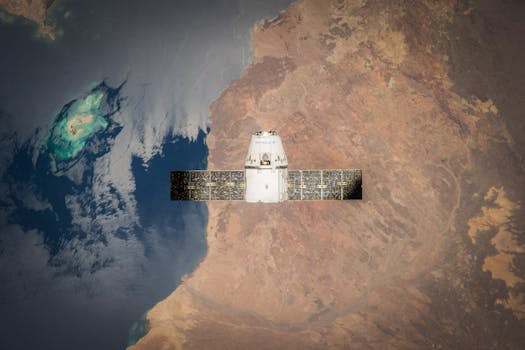From Ground to Sky: The Evolution of Satellite Telecommunications Technology

From Ground to Sky: The Evolution of Satellite Telecommunications Technology
Satellite Telecommunications has come a long way since its inception, and its evolution has been a remarkable journey. From the first satellite launch to the current state-of-the-art systems, satellite telecommunications have played a vital role in connecting the world. In this article, we will explore the history, development, and future of satellite telecommunications technology.
The first satellite, Sputnik, was launched in 1957, marking the beginning of the space age. However, it wasn’t until the 1960s that the first commercial telecommunications satellite, Intelsat 1, was launched. This satellite was capable of transmitting telephone, telegraph, and television signals across the Atlantic Ocean. The success of Intelsat 1 paved the way for the development of more advanced satellites, and soon, satellite telecommunications became an essential part of global communication.
Early Developments
In the early days of satellite telecommunications, the technology was limited, and the signals were weak. The satellites were powered by solar panels, and the transponders were not very efficient. However, as the technology improved, so did the capabilities of the satellites. The introduction of geostationary satellites, which remain stationary in the sky, revolutionized the industry. These satellites could provide continuous coverage of a specific region, making them ideal for telecommunications.
The 1980s saw the introduction of direct-to-home (DTH) satellite television, which allowed people to receive television signals directly from the satellite. This technology became popular in the 1990s, and soon, millions of people around the world were using DTH satellite television. The success of DTH satellite television led to the development of other satellite-based services, such as satellite radio and satellite internet.
Modern Advancements
Today, satellite telecommunications technology is more advanced than ever. The introduction of high-throughput satellites (HTS) has increased the speed and efficiency of satellite communications. HTS satellites use multiple spot beams to cover a specific region, providing higher speeds and greater capacity. This technology has enabled the widespread adoption of satellite broadband, which has connected millions of people in remote and underserved areas.
The development of low-earth orbit (LEO) satellites has also transformed the industry. LEO satellites are smaller and less expensive than traditional geostationary satellites, making them ideal for constellations. These constellations can provide global coverage, enabling the creation of new services such as satellite-based internet of things (IoT) and satellite-based 5G networks.
Future of Satellite Telecommunications
The future of satellite telecommunications is exciting and promising. With the development of new technologies such as quantum encryption and artificial intelligence, satellite communications will become even more secure and efficient. The introduction of reusable rockets has also reduced the cost of launching satellites, making it more accessible for companies to launch their own satellites.
The growth of the satellite industry is expected to continue, with estimates suggesting that the global satellite market will reach $1 trillion by 2025. As the demand for satellite-based services increases, the industry will continue to evolve, with new technologies and innovations emerging. The future of satellite telecommunications holds much promise, and it will be exciting to see how the industry develops in the coming years.





